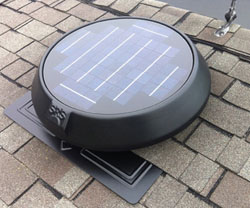Loft Ventilation Systems
If you want to keep your home in good shape and everyone who lives in it healthy, you need to care about loft ventilation. The major reason why loft ventilation is important for accomplishing both of these objectives is because it goes a long way in preventing moisture from accumulating. While moisture is created on a daily basis throughout your home, its lack of accumulation mean it’s not an issue in these spaces.
However, an unventilated loft is a prime space for moisture to collect. When this starts to happen, it’s easy for mold to begin growing. Mold can cause the various structural elements of your loft to rot. It can also damage the insulation in your loft. Additionally, because the spores it releases into the air will be able to spread through the rest of your home, it can cause everything from runny noses to the feeling of a tight chest.
What Kind of Loft Ventilation Systems are Available?
A loft ventilation system consists of intake and exhaust vents. The intake vents that make up this kind of system are added along a roof’s soffit. This allows them to pull fresh air into a loft. The exhaust vents are then placed around the upper portion of the roof. Instead of heating up and having nowhere to go, air that begins getting hot will be able to flow up through the exhaust vents. By combining these two types of vents, it’s possible to create a steady flow of ventilation through a loft. With properly functioning loft ventilation systems, the air in this space will be completely replaced in cycles of less than ten minutes.
Available Intake Vents
The three most common forms of intake vents are gable, static and soffit. It’s actually quite common for homes to already have gable vents installed. However, because of their limited effectiveness, they may not be doing a good enough job of ventilating your loft. What’s interesting about static vents is while they can be effective, they also increase the likelihood of roof leaks. As a result, their performance may not be worth the potential risk they pose. Because soffit vents work well and have a feature that allows them to keep insects from entering a loft, they are the intake vent that the majority of homeowners choose.
Exhaust Vent Options
There are several types of exhaust vents, including:
- Ridge vents
- Power ventilators
- Fan-driven ventilators

Categories
- Home
- Loft Ventilation Products
- Ceiling Loft Ventilation
- Gravity Loft Ventilation
- Lindab Ventilation
- Loft Eaves Ventilation
- Loft Rotary Vents
- Loft Ventilation Fans
- Loft Ventilation Grilles
- Loft Ventilation Pipes
- Loft Ventilation Systems
- Roof Ventilation Tiles
- Small Loft Vents
- Loft Ventilation Companies
- Loft Ventilation Information
- Types Of Loft Ventilation
